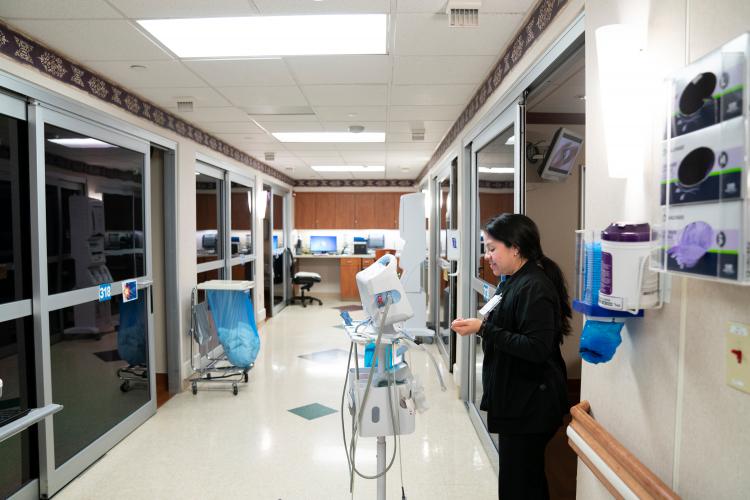
In the Clinical Decision Unit at JPS Health Network, things happen fast. Still, there is no room for short cuts when it comes to patient safety.
Trisha Swift, Vice President and Chief Quality Officer, said attention to detail and professional efficiency make the Clinical Decision Unit (CDU) a model of best practices when it comes to safely delivering medication. The unit was named a JPS Bright Spot for 2018.
“The CDU Team routinely leads in the fewest number of near-miss medication administrations as measured on the weekly Epic report,” Swift said, noting the unit averages 3-5 near miss warnings per 1,000 patient interactions. “The entire CDU team is aware of this data and individual ‘misses’ are shared with staff for performance improvement opportunities.”
What is a near miss? According to Stephen Heinrich, RN Clinical Manager in the Clinical Decision Unit, JPS keeps careful tabs on the delivery of medication through its Epic patient management computer system. EPIC issues a warning if it detects a caregiver is traveling down a path that could result in even a remote possibility of a patient getting the wrong medicine. It is considered to be a “near miss” if a computerized warning was issued, even if the medication never was close to actually being administered to the patient. If a nurse makes nine correct steps out of 10, the warning could still be issued. The goal is to achieve perfection in the delivery process so a warning is never even triggered.
“It could be a matter of timing that the nurse went to get the medicine and, in the meantime, the doctor decided to order that the medication be discontinued,” Heinrich explained of potential causes for a near miss warning. “If there are two patients in a room and the nurse gets out medication for both patients at the same time, it would trigger a warning because it’s possible that the medicine could go to the wrong patient. Everything else could be done perfectly, the situation could be completely under control, but those little details would cause a warning. We try to use the system to keep us constantly accountable so we’re always using the best, safest procedures.”
If a nurse triggers a warning, Heinrich schedules a meeting so the reason for the near miss alert can be discussed in an effort to figure out how to prevent it from happening again. A list of near miss warnings for the unit is posted as a scorecard with the people who cause the fewest warnings at the top – and the most at the bottom.
“It’s not about punishment,” Heinrich said. “It’s about transparency. No one wants to be at the bottom of the list. So it’s a way we motivate ourselves to be the best we can be at what we do.”
The CDU is where patients go after they leave the Emergency Department, Heinrich said. After their potentially life-threatening health concerns are under control, they transfer there to be tested or monitored to find the answers needed to resolve their physical ailments. Common issues confronted in the unit include getting diabetes under control, calming flare ups of asthma or Chronic Obstructive Pulmonary Disease and dealing with cellulitis, pneumonia, heart failure and chest pain.
With 32 beds, patients typically stay in the CDU 48 hours or less. About 85 percent of people who come to the unit are discharged, while about 15 percent are transferred to regular patient rooms if they require a longer stay in the hospital.
